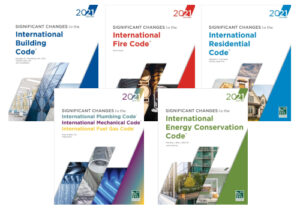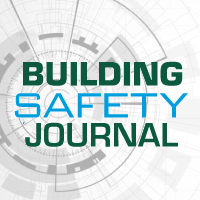
Significant changes to stairway construction in podium buildings in the 2021 International Building Code
A modification to Section 510.2 (Stairway Construction in Podium Buildings) in the 2021 International Building Code states that where a combustible building (Type III, IV or V) is located above the lower noncombustible (Type IA) building when applying the horizontal building separation allowance, interior exit stairways located within the Type IA building may be constructed of combustible materials where specified conditions are met.
The provisions set forth in Section 510 allow for modifications or exceptions to the general provisions of Chapter 5 for allowable building heights and areas. These special provisions are viewed as specific in nature and take precedence over any general provisions that may apply. Section 510.2, addressing the horizontal building separation allowance, is one of the most common applications in use today.
This methodology is often referred to as a “podium” or pedestal” building. Limited in application, the provisions create, in effect, an exception that allows those stories below a 3-hour horizontal fire separation to be considered portions of a separate building from the “building” above the horizontal fire separation. Multiple conditions must be met in order to take advantage of these provisions. A new allowance addresses the permissible materials of stairway construction where a combustible building (Type III, IV or V) is located above the lower noncombustible (Type IA) building.
Section 1011.7 indicates that stairways are to be built of materials consistent with those materials permitted for the building’s type of construction. This mandate is easily addressed in most buildings, as the code requires a building to be classified as a single construction type. However, in those buildings designed and built under the special provisions of Section 510.2 allowing for a horizontal building separation, two types of construction are permitted. The lower building must be of Type IA construction; however, the upper building may be of any complying construction type. Where the upper buildings is built of combustible construction (Type III, IV or V), a conflict has existed regarding how the stairway that extends through both types of construction should be regulated. Noncombustible stairway construction would be required in the Type IA building, while combustible stairway construction would be permitted in the Type III, IV or V building.
Where an interior exit stairway is located in a building utilizing the horizontal building separation allowance, it is now permissible for the stairways to be constructed of combustible materials throughout, including in the Type IA portion of the building, provided two conditions are met. One, the upper building is classified as Type III, IV or V construction, and two, the stairway located in the lower building is enclosed by a minimum 3-hour fire-resistance-rated shaft enclosure. Where the upper building is of noncombustible construction (Type I or II), the entire stairway must be constructed of noncombustible materials.
Where new Condition 4 is applied, the minimum 3-hour fire-resistance-rated horizontal separation is extended vertically downward adjacent to the stairway enclosure, in effect isolating the exit stairway in the upper building. As a result, the interior exit stairways can be considered as located only in the upper building where combustible stairway construction is permitted.
Read the full significant change.
 The 2021 Significant Changes guides are available for the International Building, Fire, Residential, Energy Conservation, Plumbing, Mechanical and Fuel Gas Codes. This valuable series can help any code user save time by zeroing in on the most critical changes in the 2021 International Codes. The Code Council’s technical experts provide summaries, analysis and graphics for these changes making them clear and easy to understand. Each edition provides a comprehensive analysis of significant changes since the 2018 edition, offering key insights into its contents and implications. Each change analysis features the affected code sections and identifies the change with strikethroughs and underlines to show modifications to the existing language. Each change is accompanied by a quick summary, detailed illustrations, and a discussion of its significance, which brings the technical jargon of the code to life in a real-world setting.
The 2021 Significant Changes guides are available for the International Building, Fire, Residential, Energy Conservation, Plumbing, Mechanical and Fuel Gas Codes. This valuable series can help any code user save time by zeroing in on the most critical changes in the 2021 International Codes. The Code Council’s technical experts provide summaries, analysis and graphics for these changes making them clear and easy to understand. Each edition provides a comprehensive analysis of significant changes since the 2018 edition, offering key insights into its contents and implications. Each change analysis features the affected code sections and identifies the change with strikethroughs and underlines to show modifications to the existing language. Each change is accompanied by a quick summary, detailed illustrations, and a discussion of its significance, which brings the technical jargon of the code to life in a real-world setting.
Significant Changes to the International Building Code, 2021 Edition is available in the ICC Store or through Digital Codes Premium.






